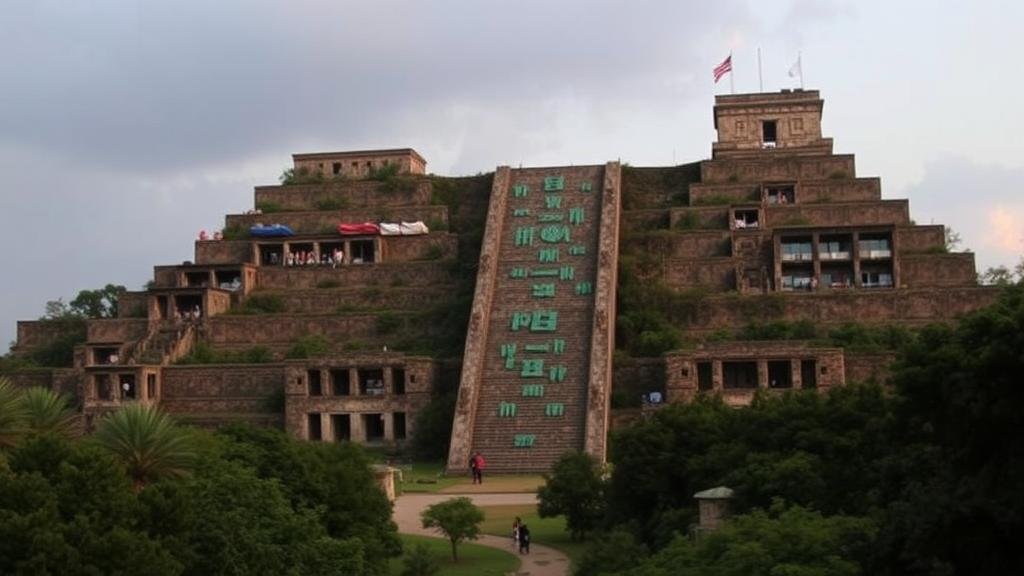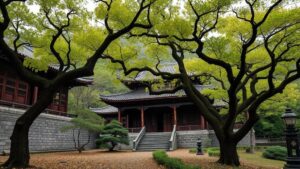Following ancient jade trails to discover lost Mesoamerican treasure troves.
Following Ancient Jade Trails to Discover Lost Mesoamerican Treasure Troves
The allure of lost treasures captivates adventurers, historians, and treasure seekers alike. Among the many rich histories of Mesoamerica, ancient jade trails have emerged as significant pathways leading to treasures long buried. This article delves into the enigmatic relationship between jade, treasure, and the civilizations of Mesoamerica, investigating how these ancient routes have shaped our understanding of trade, culture, and power in the region.
The Significance of Jade in Mesoamerican Cultures
Jade, particularly the greenstone known as jadeite, held immense value across numerous Mesoamerican societies, including the Olmec, Maya, and Aztec civilizations. This precious stone was not only prized for its beauty but also for its symbolic importance, representing life, the cosmos, and agricultural fertility.
Archaeological evidence suggests that the use of jade dates back to around 1500 BCE. Sites such as La Venta, located in present-day Tabasco, Mexico, showcase finely crafted jade artifacts including masks and figurines. These items were often buried with elites, indicating their status and the believed connection between jade and the divine.
Trade Routes and the Pathways of Power
The ancient jade trade routes were pivotal to the socio-economic structures of Mesoamerican civilizations. Jade was not sourced locally in many areas, leading to extensive networks of trade where jade could circulate widely. The Maya civilization, for example, developed complex trade routes that stretched from the highlands of Guatemala to the Gulf Coast, facilitating the transport of jade and other goods.
Statistical reports indicate that during the peak of their power, the Maya traded over 500 tons of jade, emphasizing its importance in rituals, societal hierarchy, and the economy.
Exploring the Trails: Notable Sites
Explorers seeking lost treasures often focus on specific sites linked to ancient jade regardless of whether these treasures are artifacts, carvings, or caches. Some notable locations include:
- Copán: Located in present-day Honduras, this archaeological site was an important Maya city where jade artifacts were unearthed, highlighting the region’s role in the jade trade.
- Tikál: One of the largest ancient Maya cities, its temples housed impressive jade burial offerings and ceremonial items, indicating the city’s wealth and influence.
Documented Discoveries and Lost Treasures
While many treasure seekers have set out in pursuit of ancient riches, tangible discoveries reinforce the historic jade trails. In 1965, a remarkable find at the Maya site of La Laguna yielded over 800 jade pieces, showcasing how past civilizations revered this stone. Also, the famous tomb of the Lord of Sipán in Peru revealed gilded cat ornaments made from jade, further underscoring the interconnectedness of jade across cultures.
Despite substantial findings, many treasures remain hidden. Reports from the Yucatán Peninsula indicate that unexplored caves and untouched ruins may harbor caches of jade relics. Researchers continue to chart ancient trade routes using cutting-edge technology to uncover these lost troves.
The Impact of Modern Exploration
Modern archaeological methods have transformed our understanding of jades historical significance. Techniques such as ground-penetrating radar and geographic information systems (GIS) enable researchers to identify potential sites more accurately, enhancing the pursuit of lost treasures. In 2019, archaeologists employed these technologies to locate what they believe might be undiscovered jade caches near the ancient city of Palenque.
Conclusion: The Enduring Legacy of Jade in Mesoamerican Culture
The ancient jade trails are not merely remnants of bygone eras; they symbolize the intricate relationships among trade, culture, and identity in Mesoamerica. search for lost treasures along these trails brings new life to the legacies of the past.
For those interested in following these jade trails, a few practical steps can enhance your journey:
- Research archaeological sites and historical background to understand the cultural significance of jade.
- Engage with local historians and archaeologists who may offer insights into contemporary exploration.
- Participate in guided archaeological tours that focus on Mesoamerican jade and its historical context.
By unraveling the stories within the trails of jade, we honor the rich heritage of Mesoamerica while uncovering the mysteries that lie beneath its surface.



